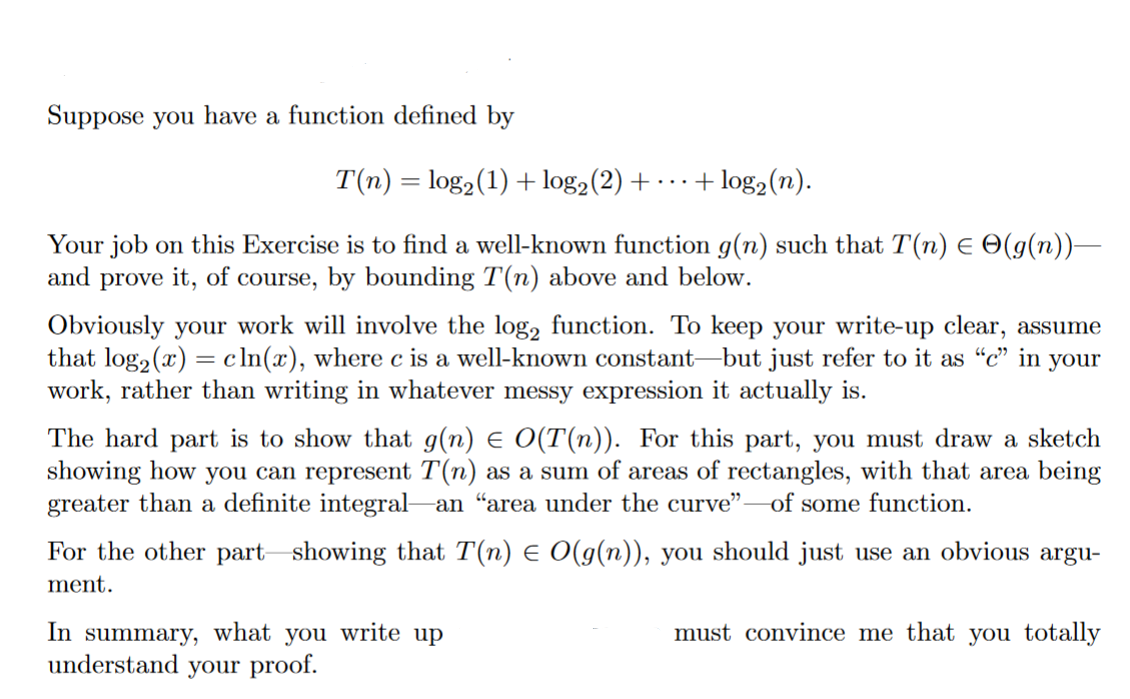Answered step by step
Verified Expert Solution
Question
1 Approved Answer
Suppose you have a function defined by T(n) = log2 (1) + log2(2) + + log2(n). Your job on this Exercise is to find a

Step by Step Solution
There are 3 Steps involved in it
Step: 1

Get Instant Access to Expert-Tailored Solutions
See step-by-step solutions with expert insights and AI powered tools for academic success
Step: 2

Step: 3

Ace Your Homework with AI
Get the answers you need in no time with our AI-driven, step-by-step assistance
Get Started


